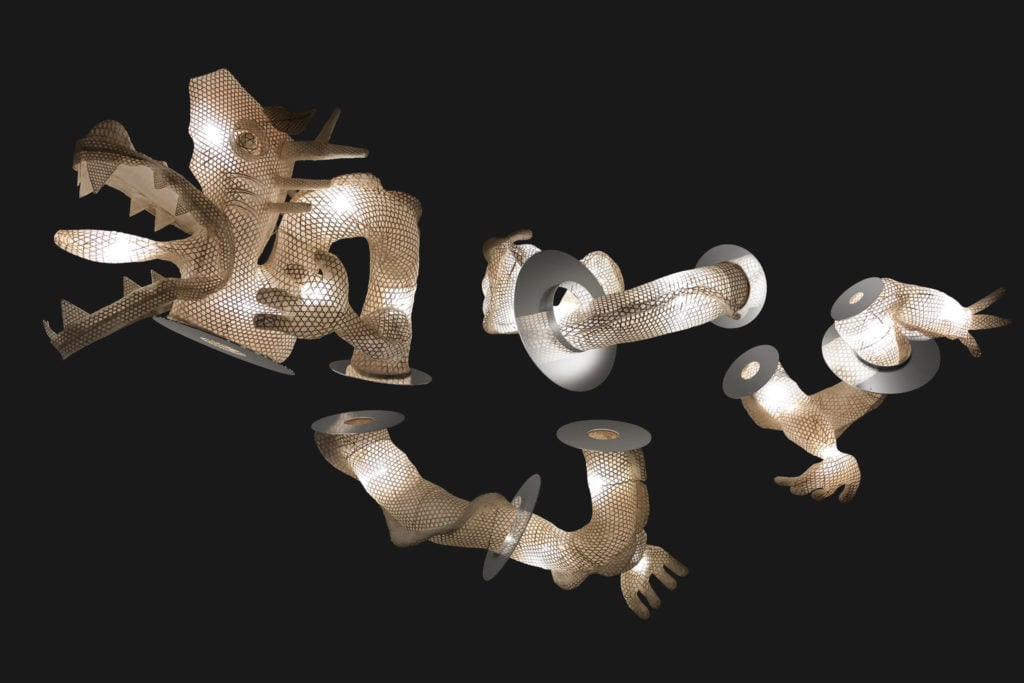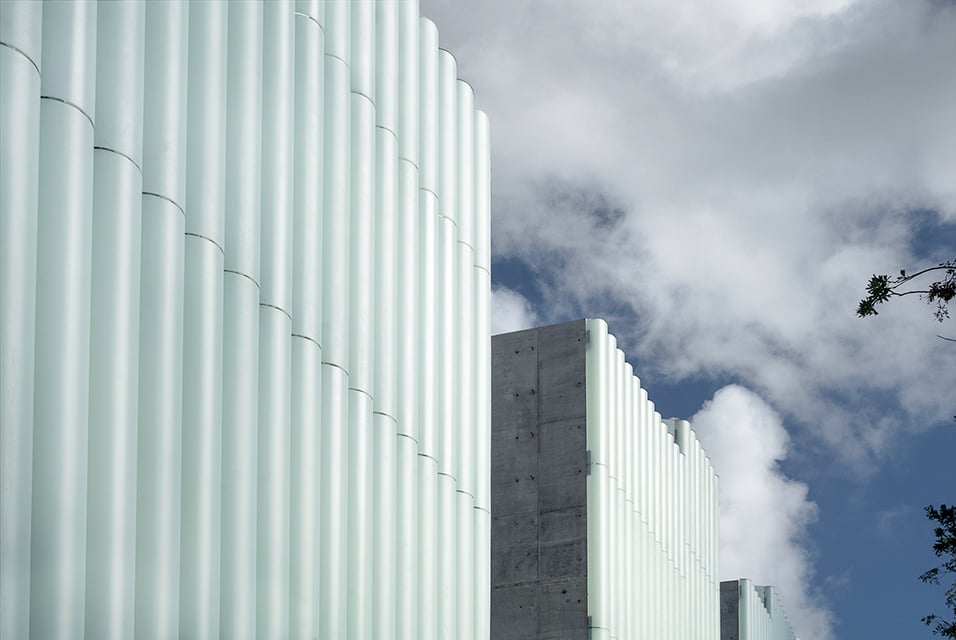Art World
The Expanded MFA Houston Will Host Seven Splashy Sculpture Commissions, Including Not One, but Two Hallucinatory Artist-Designed Tunnels
The new museum also drastically expands its room to show contemporary art.

The new museum also drastically expands its room to show contemporary art.

Sarah Cascone

These days, it seems no major encyclopedic museum is complete without an equally major program of contemporary sculpture.
That’s why the Museum of Fine Arts, Houston, is planning a series of high-profile commissions to debut alongside its $450 million expansion and redevelopment in fall 2020. The seven site-specific installations are by an international crew of artists: El Anatsui, Byung Hoon Choi, Carlos Cruz-Diez, Olafur Eliasson, Trenton Doyle Hancock, Cristina Iglesias, and Ai Weiwei.
The museum’s director Gary Tinterow announced the project’s projected opening date and the new artworks at a lunch in New York City. The works will be scattered across the museum’s 14-acre facilities in downtown Houston, an area dubbed the Susan and Fayez S. Sarofim Campus.
The centerpiece of the plan, which has been in the works since 2012—and has already seen the opening of new public plaza, a new home for the Glassell School, and the new Sarah Campbell Blaffer Foundation Center for Conservation—will be the new Nancy and Rich Kinder Building for 20th- and 21st-century art.
It’s a major development for the Houston museum, explained Tinterow, because “modern and contemporary art haven’t had a proper home in our galleries since the 1950s.” The new facility will allow curators to finally showcase dozens of artworks acquired since 2007 through an endowment established by Caroline Wiess Law specifically for modern and contemporary works. The endowment is also funding the new commissions.

Detail view of glass tubing on the eastern facade of the Nancy and Rich Kinder Building. Photo courtesy of Steven Holl Architects.
Designed by Steven Holl Architects, the building adds 100,000 square feet of exhibition space, a nearly 75 percent increase for the museum as a whole. Its facade is clad in vertical glass tubes that will be illuminated at night and a canopy-style roof inspired by Texas clouds designed to let in natural light. The trapezoidal building’s floorplan has been laid out, explained Steven Holl, with consideration for how visitors move through the space.
“The Museum of Modern Art [in New York] is full of dead end galleries—but we won’t talk about that,” joked the architect.
In front of the Kinder building’s main entrance, Iglesias is creating a sculptural pool of cast bronze. “It’s going to be truly extraordinary and an apparition in the center of the city like no other,” Tinterow enthused. At another entrance, Choi’s Scholar’s Way, a trio of sculptures made of Indonesian basalt, will stand in a courtyard pool. Inside the building, Anatsui is planning one of his signature metallic curtains. “We expect it will be in the mode of the sculpture he made for the Ghana pavilion at the Venice Biennale,” said Tinterow.
Two of the new works will take the form of tunnels, connecting the new Kinder building to existing campus structures. An underground chromatic passageway by Cruz-Diez, designed before his death in June, will bring visitors into the Caroline Wiess Law Building across the street. Tinterow described it as “three zones of color which will transform our perception as we move through the tunnel.”
To get from the Kinder to the museum’s Glassell School of Art, visitors will walk through a yellow light installation by Eliasson that mixes warm sodium lights with purple light, a combination of chromatic opposites that tricks the eye into thinking everything else is black and white. “It’s like The Wizard of Oz,” Tinterow explained. “When you emerge again, you’ll be able to see in color, but it will be extra vibrant for a few minutes.”
Inside the Glassell, a kite-like dragon sculpture by Ai will hang from the ceiling. Elsewhere on the campus, local artist Trenton Doyle Hancock is creating and a 10-by-22-foot tapestry for the museum’s new restaurant. “Our ambition is that it will be Houston’s finest restaurant,” Tinterow told reporters. “It will certainly have Houston’s finest public tapestry.”